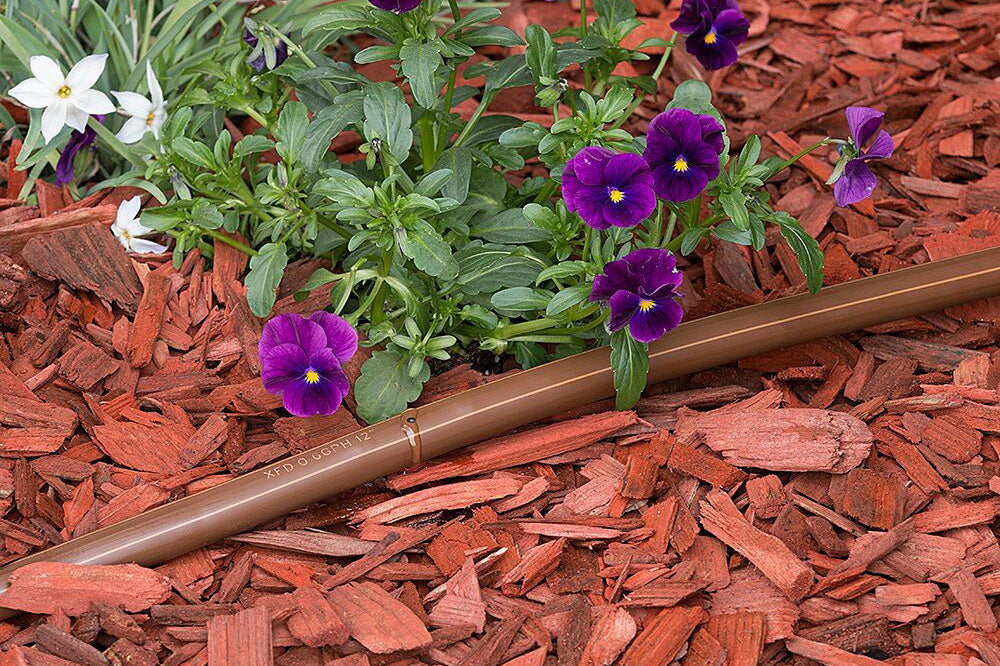Expert Guides!
Expert Guides!

We get asked this question quite often, and it already features in our Frequently Asked Questions page, but we thought we'd dive in deeper to give you a much better look at the differences between soaker hose and drip line. So, what's best?
Soaker hoses and drip lines are irrigation hoses that can save you both time and money. Both types of irrigation hoses allow water to seep directly into the soil, dispersing water exactly where it's needed to the root zone of plants. Precise watering is ideal for plants and it’s great for the environment. Installation is quick and easy - all you need to do is lay the pipe through planted areas (flower beds, borders, hedgerows, etc.), cap off the end, connect to a garden tap, and you're set to go.
Each performs roughly the same job but in very different ways. Both types have their advantages and their limitations, so choosing one over the other may not be as straightforward for the uninitiated.
In this product guide, Easy Garden Irrigation explains what each irrigation hose can do, why one may be better than the other, and ultimately try to help you pick the right irrigation hose for your garden. Read on to find out more about soaker hoses, drip lines, and their respective pros and cons.
Shop Garden Irrigation Systems


Soaker hoses have been around for as long as we can remember. They are a favourite with many gardeners and the go-to choice for lots of automatic watering installations. A soaker hose is typically made of ultra-porous rubber and polyethene. This allows water to release slowly and provide a deep soaking for the surrounding area.
The internal dimensions are the same as the irrigation supply pipe (13mm), meaning you can use the same fittings and connectors as you'd use with other types of micro irrigation systems. This allows you to completely customise a garden watering system to suit your exact needs.
Read our guide to automatic watering for a closer look into hosepipe fittings, connectors and accessories that can be matched with a soaker hose.
The drawback to using soaker hose is that the release of water is unregulated. This can especially cause issues when installing for a larger irrigation system or when you require precision watering. These issues are mainly cause by loss of pressure and water flow over longer lengths. The further the water travels through the soaker hose, the less water there is available to be released. Eventually, there is a point where there is no water left to release.
Although the loss in water pressure can be limiting, soaker hoses can still be significantly useful if used correctly. Typically, we’d only recommend using up to 20-30 metres per length of soaker hose, and recommend using up to 50 metres in total per irrigation zone.

Drip lines are a much more advanced method for drip irrigation systems and are often the preferred choice of professional installers. They are made from the same material as irrigation supply pipes (LDPE) with pressure compensating drip emitters pre-installed along their entire length, spaced every 33cm. The built-in pressure compensating drip emitters allow for precise calculation of flow requirements. This results in much more efficient watering and an easier installation.
Read more on the best way to design and install your garden drip irrigation system in our garden irrigation planning guide.

A drip line is less susceptible to UV damage, algae growth, and it provides more efficient watering than a soaker hose. It’s designed to be used in long runs and is great for watering hedgerows and large areas. You can run a length of drip line up to 100 metres and use anywhere up to 150 metres in a single irrigation zone.
The major drawback to using drip lines is the cost of fittings required to make the connections. We recommend using anti-leak fittings to ensure a secure connection when installing. These can be a bit more costly than the standard fittings, but they do provide a much better connection and overall more reliable installation.
Shop drip lines and accessories
Finding the right irrigation system is incredibly important to maintain the plants in your garden properly. Each and every garden is unique, meaning that there is never a one-size-fits-all solution. You will need to consider various factors, including the size of your garden, the water pressure available, and how much money you are willing to spend.
Soaker hoses are the perfect, low-cost solution for any small garden. The quick and easy installation makes them a no-fuss garden irrigation system, perfect for first-time gardeners. Soaker hoses function their best in a garden with level grounds as well as raised beds.
Drip lines are a great, water-saving solution for large gardens. They can work well in spaces with sloped grounds and work best if laid out in straight rows. Drip irrigation systems are also ideal for borders, flower beds, planter boxes, pots, or vegetable patches.
See our Drip Irrigation System Planning and Installation Guide for detailed guidance.
We hope this guide has helped you to choose what's best for your requirements, if you have any questions, feel free to drop us a line.
If you need help planning an irrigation system, head on over to the help and advice section of our website where you can learn more about planning and installing irrigation systems.
Comments
Leave a comment